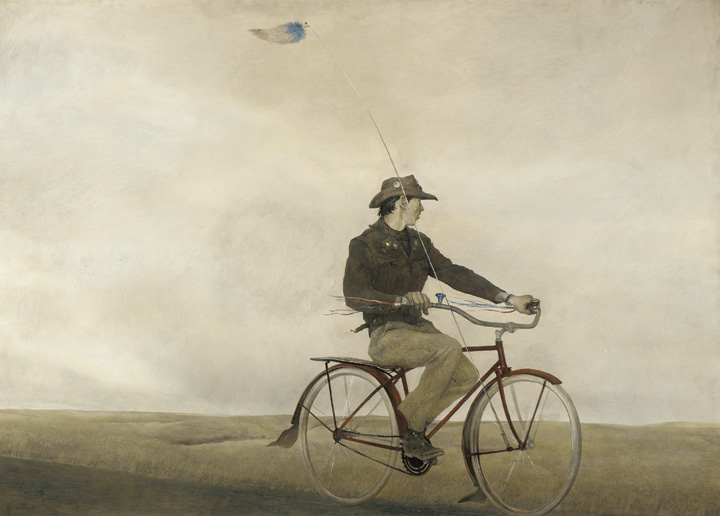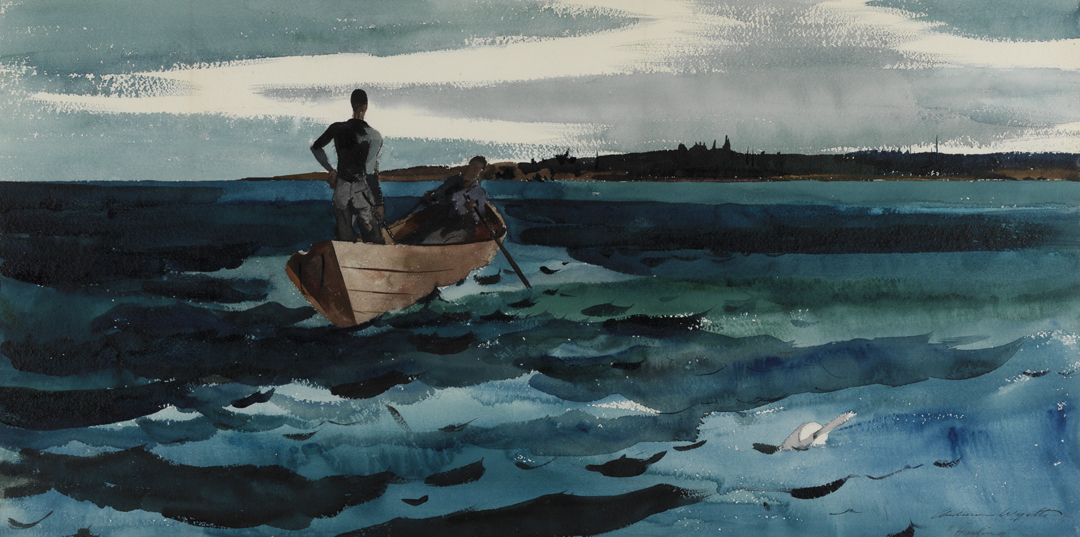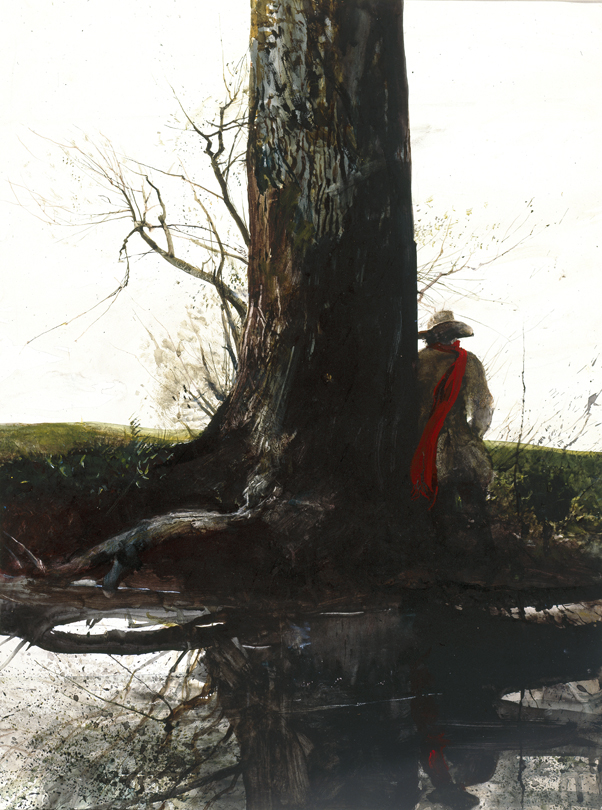
Young America
Andrew Wyeth
A painter of landscape and figure subjects in Pennsylvania and Maine, Andrew Wyeth is one of the best known American artists of the twentieth century. His painting style is representational with dreamy overtones, which in the American context of the post-World War II period was often termed Magic Realism. Deeply rooted in depicting everyday reality, Magic Realist painters like Paul Cadmus, Ivan Albright, George Tooker, Philip Evergood, and Wyeth tempered their realism with fantasy and wonder. Wyeth worked primarily in tempera and watercolor, often using the drybrush technique.
Wyeth was trained by his father, the famous illustrator N. C. Wyeth, who taught the aspiring artist that depicting mood through the subtleties of changing light and shadow was the ultimate goal of artmaking. Aside from home schooling provided by his parents, Wyeth was never formally educated in art. Like the artists mentioned above, Wyeth maintained a style strongly oriented toward realism during the heyday of Abstract Expressionism. Adhering to his convictions regarding the combination of realism and fantasy, Wyeth was snubbed by many prominent art critics. His paintings suggest rural quietude, isolation, and a somber mood and are usually devoid of modern-day objects like automobiles. Wyeth formed close relationships with virtually all of the people he painted, and the subject of "Young America" was no different. The boy was a neighbor of the Wyeth family and a friend of Wyeth's children.
Artist
Date of Birth
(1917-2009)
Date
1950
Medium
Egg tempera on gessoed board ("Renaissance Panel")
Dimensions
32 1/2 x 45 5/16 in. (82.55 x 115.09375 cm.)
Accession #
1951.17
Credit Line
Joseph E. Temple Fund
Copyright
© Andrew Wyeth / Artists Rights Society (ARS), New York
Category
Subject
We're so excited you're planning to visit PAFA!
Make time for art — visit us Thursday to Sunday.
Before reserving your tickets, please review helpful information about museum hours, accessibility, building access, and special admission programs.
If you have any questions, feel free to reach out to us at visitorservices@pafa.org — we’d love to help!


![[Coats hanging on pegs] recto and verso](/sites/default/files/artworkpics/1986_29_3_l.jpg)